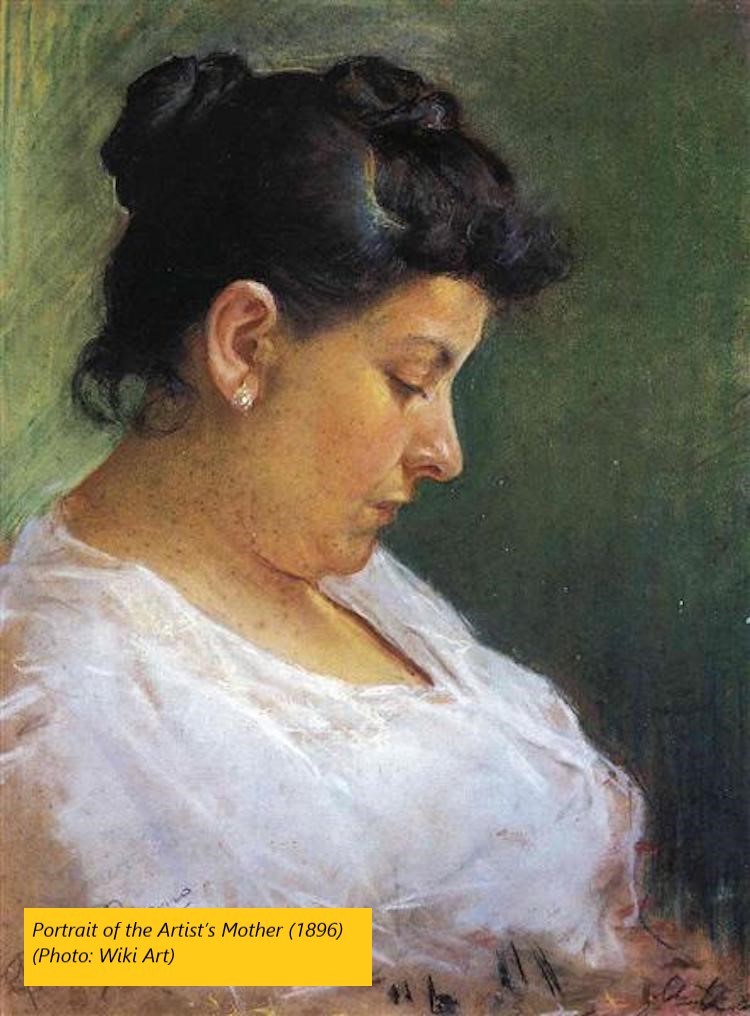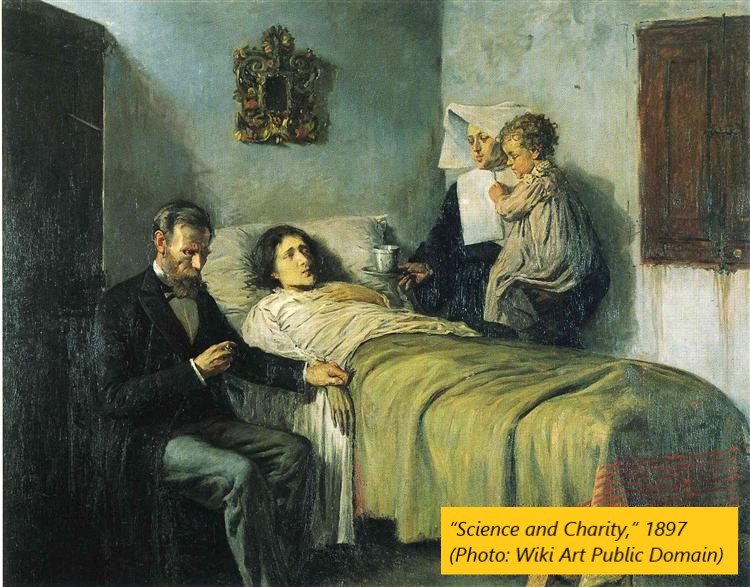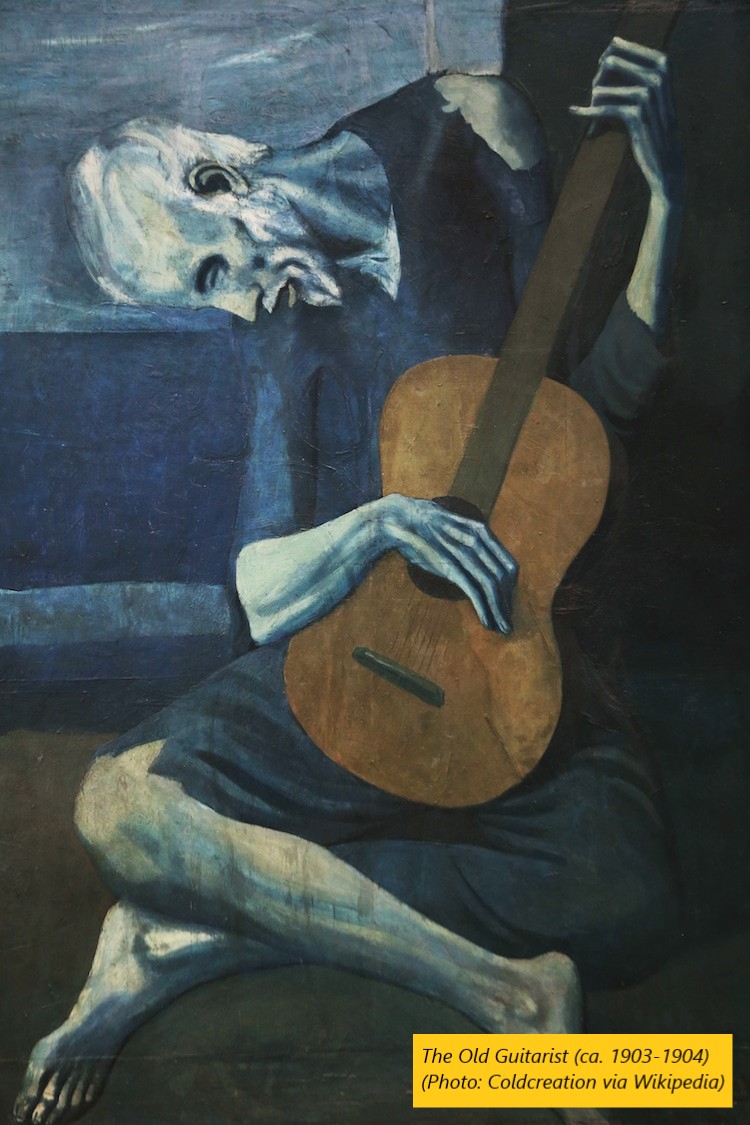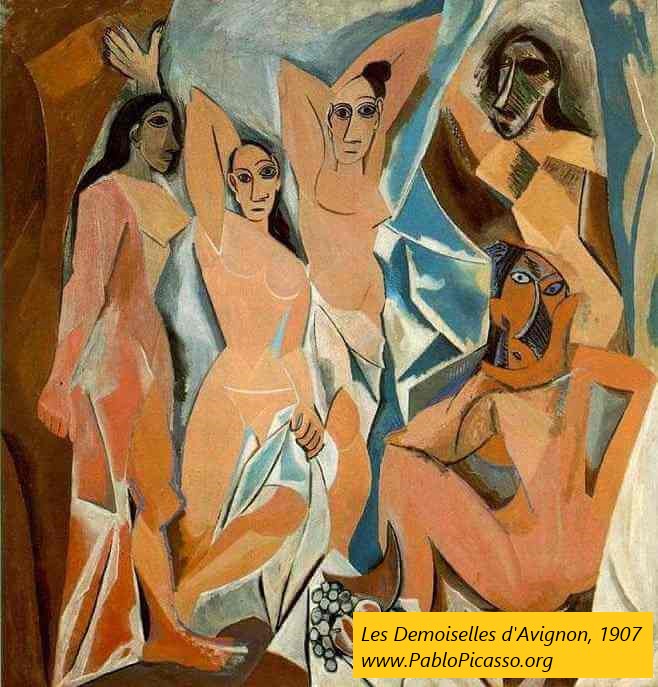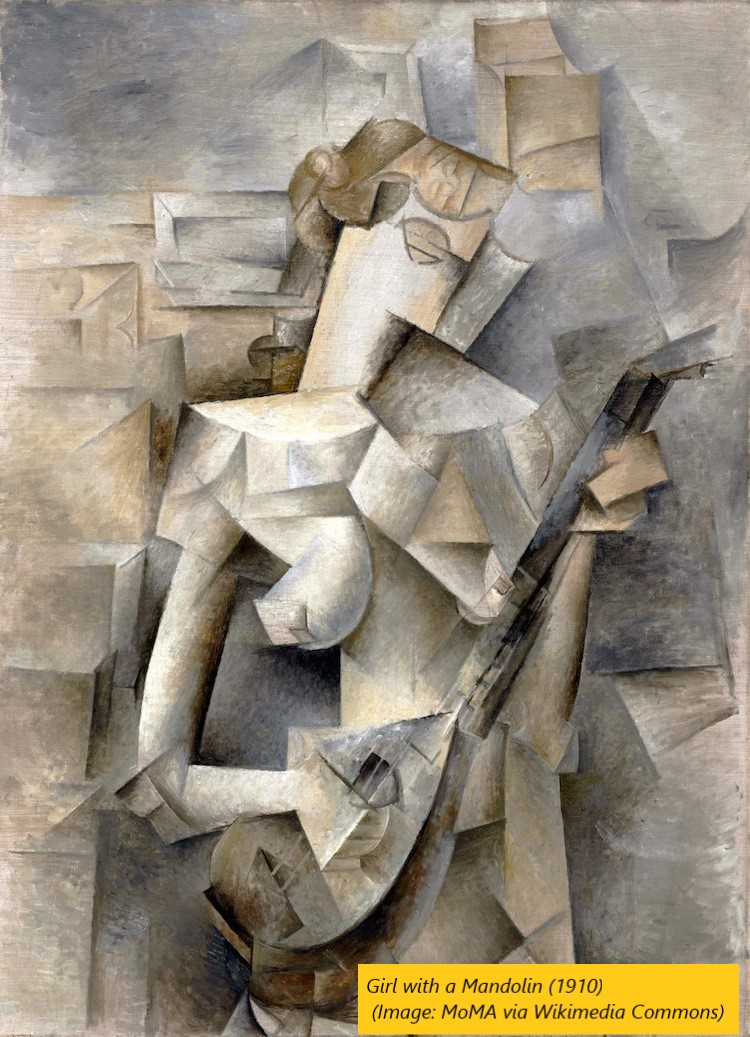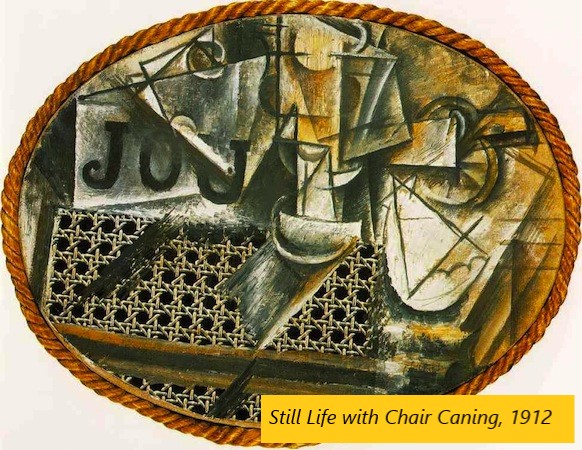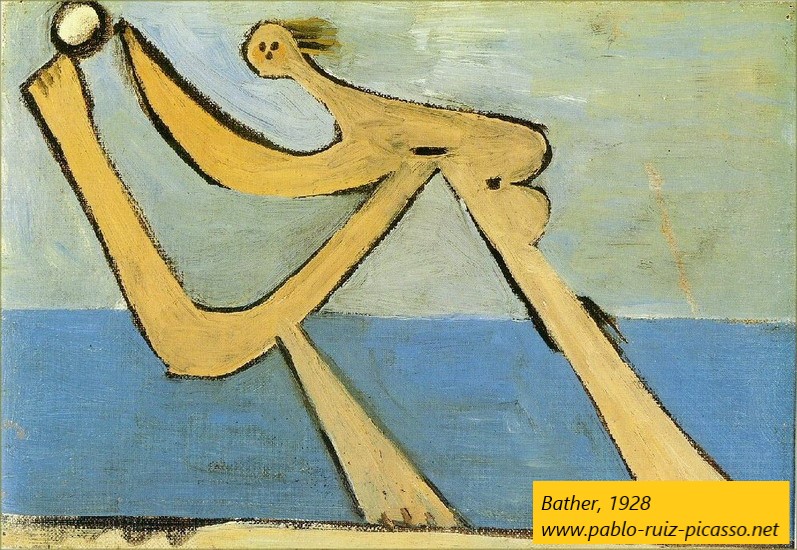7/34 For example, look at the 2 masterpieces below, obviously painted by someone talented. Notice the lifelike detail, the illusion of 3D depth, realistic colours.
Also note how it seems like we took a pic of a scene at one point in time
Also note how it seems like we took a pic of a scene at one point in time
8/34 One might think that Picasso looked at the above, decided it was all too difficult, and rebelled against tiger parenting by spending rest of his life making strange art.
Just like how I& #39;ve given up affording a home, perhaps Picasso gave up because he couldn& #39;t hack it
Just like how I& #39;ve given up affording a home, perhaps Picasso gave up because he couldn& #39;t hack it
9/34 One would also be wrong, since the 2 paintings above are also Picassos. Not only that, but they were done when he was <20 y/o
The next time you hear someone say that Picasso had no talent, point them to his earlier work https://mymodernmet.com/picasso-early-work/
cc">https://mymodernmet.com/picasso-e... @mymodernmet
The next time you hear someone say that Picasso had no talent, point them to his earlier work https://mymodernmet.com/picasso-early-work/
cc">https://mymodernmet.com/picasso-e... @mymodernmet
10/34 Now take a look at another Picasso, painted after the two above:
What& #39;s diff? The colour has changed, no longer being realistic, leading to a change in mood. The figure is also more awkwardly posed.
What& #39;s diff? The colour has changed, no longer being realistic, leading to a change in mood. The figure is also more awkwardly posed.
11/34 What& #39;s similar? There& #39;s still some depth, and we& #39;re still seeing one point of view. It& #39;s as though we took a pic, and then added some bad filters on top of it
12/34 @kellymrichman believes the tone shift was due to Picasso& #39;s depression from a friend& #39;s suicide.
We can see Picasso moving away from realism, and experimenting if there& #39;s more to art than just duplicating images. https://mymodernmet.com/pablo-picasso-periods/">https://mymodernmet.com/pablo-pic...
We can see Picasso moving away from realism, and experimenting if there& #39;s more to art than just duplicating images. https://mymodernmet.com/pablo-picasso-periods/">https://mymodernmet.com/pablo-pic...
13/34 In 1907 Picasso paints a scandalous, Cezanne and African art inspired piece, "Les Demoiselles d& #39;Avignon."
This work, of prostitutes in a Barcelona brothel, would be the start of cubism, one of the most influential movements in art and a new way of representing reality.
This work, of prostitutes in a Barcelona brothel, would be the start of cubism, one of the most influential movements in art and a new way of representing reality.
14/34 What is going on here? Picasso is clearly no longer going for realism in his drawings. A lot of the image also feels 2D and flat, as he doesn& #39;t care about giving an illusion of 3D depth anymore.
15/34 Even more interesting is the face on the bottom right. The parts of the face don& #39;t align where you expect them to be and the shadows are off.
Almost as if you were looking at the face from multiple points of view and trying to put all that down on a flat surface.
Almost as if you were looking at the face from multiple points of view and trying to put all that down on a flat surface.
16/34 Which is precisely what Picasso is trying to do.
Rmbr the start where we talked about realistic drawings:
- the textures and colours were lifelike
- the images felt they had depth
- everything was seen from one perspective?
Rmbr the start where we talked about realistic drawings:
- the textures and colours were lifelike
- the images felt they had depth
- everything was seen from one perspective?
17/34 Picasso took all of that and flipped it, creating something that was:
- more abstract
- flat
- seen from multiple points of view, all overlaid
- more abstract
- flat
- seen from multiple points of view, all overlaid
18/34 ‘A head’, said Picasso, ‘is a matter of eyes, nose, mouth, which can be distributed in any way you like’.
19/34 Works such as "Girl with a Mandolin" below do not have one perspective. Instead, imagine painting a bit of what you see from one spot, then moving and painting that same bit from another spot.
20/34 Rinse and repeat. You could paint it looking down on the figure, looking up, imagining a different source of light etc.
What you& #39;re not doing is just painting it as you see it from one spot.
What you& #39;re not doing is just painting it as you see it from one spot.
21/34 If you have trouble following the cubism process, @MuseumModernArt conservator Corey D& #39;Augustine has an excellent video walking you through it; it& #39;s what inspired this post: https://youtu.be/rGZYfSzvPvs ">https://youtu.be/rGZYfSzvP...
22/34 The cubism process results in a bizarre blend of fragments, shadows being cast all over the place, and nothing making sense.
Contrast this with they typical realistic painting and you can see why it was so exciting and novel.
Contrast this with they typical realistic painting and you can see why it was so exciting and novel.
23/34 Colour photography& #39;s rising popularity begged the question: If you have a tool that represents reality perfectly, what then is the point of art?
Picasso and his peers are saying that there’s more to art than just recreating a scene.
Picasso and his peers are saying that there’s more to art than just recreating a scene.
24/34 Around the same time, Picasso and Braque also start popularising collages.
It& #39;s not just multiple perspectives, it& #39;s also multiple media now. https://cubismsite.com/picasso-collage/">https://cubismsite.com/picasso-c...
It& #39;s not just multiple perspectives, it& #39;s also multiple media now. https://cubismsite.com/picasso-collage/">https://cubismsite.com/picasso-c...
25/34 In “Still Life with Chair Caning”, Picasso has an actual rope on the edge of the painting, a print of chair caning (that brown material on the bottom left used in chairs), and painted a strange scene on top.
It& #39;s a collage of 3 separate things and multiple pov
It& #39;s a collage of 3 separate things and multiple pov
26/34 Why is this weird? Well, what’s the point of your art if you’re just taking pre-printed material and sticking it on your canvas? Where’s the hard work?
The use of a rope frame is also unusual vs normal elaborate ones
Picasso is rejecting the status quo of art.
The use of a rope frame is also unusual vs normal elaborate ones
Picasso is rejecting the status quo of art.
27/34 @bethrharris and @drszucker elaborate more on the painting here and how to interpret it: https://www.khanacademy.org/humanities/art-1010/cubism-early-abstraction/cubism/v/picasso-still-life-with-chair-caning">https://www.khanacademy.org/humanitie...
28/34 After this, Picasso paints things the way he thinks of them, in an abstract sense. He takes pieces and reassembles them differently, playing around with the things that make up the object.
“I paint objects as I think them, not as I see them”
“I paint objects as I think them, not as I see them”
29/34 It’s the start of surrealism; though ppl don’t consider Picasso a true surrealist.
https://focusonpicasso.com/product-category/surrealism-period/">https://focusonpicasso.com/product-c...
https://focusonpicasso.com/product-category/surrealism-period/">https://focusonpicasso.com/product-c...
30/34 From then on until his death, Picasso continues experimenting, doing >13k paintings and >100k prints in his lifetime. Some would be panned at first, but viewed as precursors to other art movements posthumously.
https://www.picassomio.com/art-articles/picasso-how-many-artworks-did-picasso-create-in-his-life-time.html
Cc">https://www.picassomio.com/art-artic... @picassomio
https://www.picassomio.com/art-articles/picasso-how-many-artworks-did-picasso-create-in-his-life-time.html
Cc">https://www.picassomio.com/art-artic... @picassomio
31/34 What have we learnt in this brief history?
- Picasso was already a master when he started breaking the rules
- You can trace the logic in the evolution of his art
- He made a huge amt of work, always trying different things. Today he& #39;s known for his best, not his worst
- Picasso was already a master when he started breaking the rules
- You can trace the logic in the evolution of his art
- He made a huge amt of work, always trying different things. Today he& #39;s known for his best, not his worst
32/34 Picasso demonstrated that art has appeal beyond the aesthetic. You may not find the paintings pretty (I don& #39;t), but that& #39;s not the point. In doing so, he pushed art to new boundaries.
33/34 Does this matter today? Who cares if he mixed different points of view, used multiple media, or created collages? Has Picasso influenced anything?
I& #39;ll leave you to decide:
I& #39;ll leave you to decide:
34/34 If you liked this, I write regularly at https://avoidboringpeople.substack.com/p/fluctuat-nec-mergitur.">https://avoidboringpeople.substack.com/p/fluctua...
The monthlies are on finance and tech, the paid weeklies are on anything I find interesting (such as the above!)
The monthlies are on finance and tech, the paid weeklies are on anything I find interesting (such as the above!)

 Read on Twitter
Read on Twitter